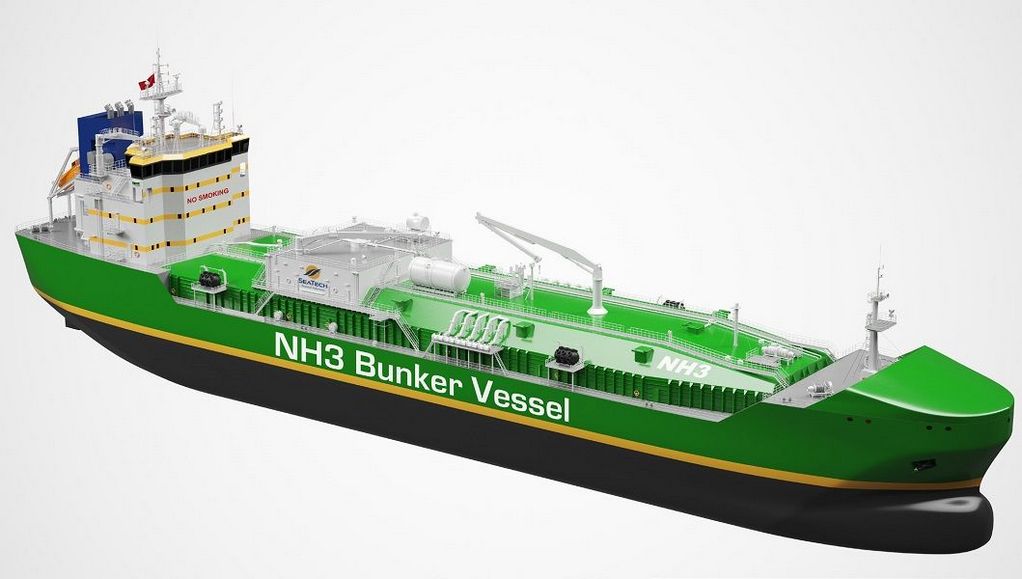RINA has issued an Approval-in-Principle (AiP) for the design of a 21,000 (cbm) ammonia bunker tanker jointly developed by SeaTech Solutions and Fratelli Cosulich Bunkers Singapore.
Low or zero-carbon ammonia has the potential to support Singapore and the wider shipping industry’s efforts towards decarbonisation and, as more and more ammonia-ready newbuild orders are being placed, the industry needs ammonia bunker tankers to bring the fuel from storage facilities to the ships.
The AiP for the ammonia bunker tanker was carried out in compliance with the process described in the “RINA Guide for Approval in Principle of Novel Technologies”, based on the technical criteria of the RINA Rules for the Classification of Ships (2023), IGF Code and IGC Code, as amended.
The AiP Certificate was presented to SeaTech Solutions at Sea Asia Exhibition 2023 in Marina Bay Sands, Singapore. The event was followed by a session where representatives of the three companies shared information on the project development, its safety and upstream considerations, regulatory requirements, opportunities, and challenges.
The AiP marks a significant milestone for the joint development project (JDP) that started in November 2021. Having achieved this critical step of the project, all parties are confident that they can support Singapore’s ambition to make ammonia bunkering a reality in the region.
Tags: Bunkering, Fratelli Cosulich, SeaTech, Singapore



Recent Posts
Hyundai Glovis to Retrofit Seven PCTCs with Avikus AI Navigation System
Super Terminais orders three more Konecranes Gottwald ESP.10 Mobile Harbor cranes
Covestro and HGK Shipping Extend Partnership to 2040 with Focus on Wind-Assisted Vessel Retrofit
Artemis Technologies Successfully Demonstrates 100 Percent Electric Crew Transfer Vessel at Aberdeen Offshore Wind Farm
IACS Council Advances Decarbonisation, Digitalisation and Governance Priorities at C91 Meeting in Beijing
Japan Launches Major R&D Project to Advance Shipbuilding with Alternative Fuels
EU Adopts Emissions Standards for Low Carbon Hydrogen to Bolster Clean Energy Market
Trafigura to Implement ZeroNorth’s AI Platform Across Global Fleet